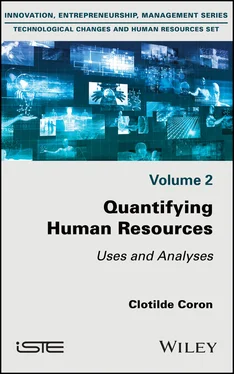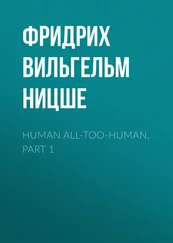Finally, the fourth argument emphasizes that, unlike objects and things, human beings can react and interact with the quantification applied to them. Thus, Hacking (2001, 2005) studies classification processes and more particularly human classifications, i.e. those that concern human beings: obesity, autism, poverty etc. He then refers to “interactive classification”, in the sense that the human being can be affected and even transformed by being classified in a category, which can sometimes lead to changes in category. Thus, a person who is entering the “obese” category after gaining weight may, due to this simple classification, want to lose weight and may therefore leave the category. This is what Hacking (2001, p. 9) calls the “loop effect of human specifications”. He recommends that the four elements underlying human classification processes (Hacking 2005) be studied together: classification and its criteria, classified people and behaviors, institutions that create or use classifications, and knowledge about classes and classified people (science, popular belief, etc.). Therefore, the possibility of quantifying human beings in a neutral way comes up against these interaction effects.
Finally, the confrontation between these two stances clearly shows the questions raised by the use of quantification when it comes to humans, and in HR notably: is it possible to measure everything when it comes to human beings? At what price? What are the implications, risks and benefits of quantification? Can we do without quantification?
I.3. HR quantification: effective solution or myth? Two lines of research
In response to these questions on the specificities of human quantification, two theoretical currents can be identified on the use of HR quantification.
One, generally normative, tends to consider quantification as an effective solution to improve HR decision-making, whether in recruitment or other areas. This approach thus supports evidence-based management (EBM), in other words management based on evidence which is most often made up of figures and measurements. In the EBM approach, quantification is therefore proof and can cover a multiplicity of objects: quantifying to better evaluate individuals (in line with the psychotechnical approach), or to know them better, or to better understand global HR phenomena (absenteeism, gender equality), all in order to make better decisions. The EBM approach thus considers that quantification improves decision-making, processes and policies, including HR. Lawler et al . (2010) thus believe that the use of figures and the EBM approach have become central to making the HR function a strategic function of the company. For example, they identify three types of metrics of interest in an EBM approach: the efficiency and effectiveness of the HR function, and the impact of HR policies and practices on variables such as organizational performance. More generally, according to the work resulting from this approach, quantification makes it possible to meet several HR challenges. The first challenge is to make the right human resources management decisions: recruitment, promotion and salary increases, for example. The psychotechnical approach already mentioned seems to provide an answer to this first challenge: by measuring individuals’ skills, motivations and abilities in an objective way, it seems to guarantee greater objectivity and rigor in HR decision-making.
The second challenge is to define the right HR policies. Rasmussen and Ulrich (2015) thus give an example where an offshore drilling company uses quantification to define a policy linking management quality, operational performance and customer satisfaction ( Box I.2). This example therefore illustrates how quantification can help identify problems and links between different factors in order to define more appropriate and effective HR policies.
Box I.2. Quantification as a source of improvement in the definition of HR policies (source: Rasmussen and Ulrich 2015)
An offshore drilling company commissioned a quantitative study that demonstrated several links and influential relationships between different factors. First, the study shows that the quality of management (measured through an annual internal survey) influences turnover, on the one hand, and customer satisfaction, on the other hand (measured through a company’s customer relationship management tool). Staff turnover influences the competence of teams (measured according to industry standards) and their safety and maintenance performance (measured using internal company software, such as falling objects), which also has an impact on customer satisfaction, and is also strongly linked to the team’s operational performance. This study therefore provided the company with evidence of the links between these various factors, which made it possible to define a precise plan of action: improving the quality of management through training and a better selection of managers, improving team competence through training and increased control, among other things.
Finally, the third challenge is to prove the contribution of the HR function to the company’s performance. As Lawler et al . (2010) point out, the HR function suffers from the lack of an analytical model to measure the link between HR practices and policies, and the organizational performance, unlike the finance and marketing functions for example. To fill this gap, they suggest collecting data on the implementation of HR practices and policies aimed at improving employee performance, well-being or commitment, but also on organizational performance trends (such as increasing production speed or the more frequent development of innovations).
This trend therefore values quantification as a tool to improve the HR function via several factors: more objective decision-making, the definition of more appropriate and effective HR policies and proof of the link between HR practices and organizational performance, which can encourage the company to allocate more financial resources to HR departments.
The other, more critical trend is part of a sociological approach and takes a more analytical look at the challenges of quantification. Desrosières’ work (1993, 2008a, 2008b) founded the sociology of quantification, which focuses on quantification practices and shows how they are socially constructed (Diaz-Bone 2016). This analytical framework is based, among other things, on the concept of conventions, which are interpretative frameworks produced and used by actors to assess situations and decide how to act (Diaz-Bone and Thévenot 2010). The economics of conventions focuses on coordination that allows institutions and values to emerge, and shows how this coordination is based on conventions, which make it possible to share a framework for interpreting and valuing objects, acts and persons, and thus acting in situations of uncertainty (Eymard-Duvernay 1989). The originality of Desrosières’ work lies in mobilizing this concept of convention to analyze quantification operations, which amounts to studying “quantification conventions” (Desrosières 2008a), namely a set of representations of quantification that will make it possible to coordinate behaviors and representations (Chiapello and Gilbert 2013).
Desrosières thus seeks to deconstruct the assumptions that accompany the myths surrounding quantification (the myth of statistics that are ostensibly a transparent and neutral reflection of the world, for example, and that constitute a guarantee of objectivity, rigor and impartiality), in particular by emphasizing the extent to which quantification is based on social constructions, and not on physical or natural quantities. He suggests that statistical indicators should be considered as social conventions rather than measures in the sense of the natural sciences (e.g. air temperature) (Desrosières 2008a). Gould (1997), without claiming to be part of the sociology of quantification, also provides very illuminating illustrations of how quantification can be influenced by social prejudices, making objectivity impossible. In one of his books, Desrosières (2008a) also highlights the extent to which statistics, far from being merely a transparent reflection of the world, create a new way of thinking about it, representing it, measuring it and, ultimately, acting on it. However, his work also focuses on the history of statistics and the dissemination of new methods in the field. Thus, Desrosières (1993) highlights the link between the State and statistics. The latter, historically confined to population counting, has gradually been enriched by new methods and theories (probabilities with the law of large numbers, then econometrics with regression methods, to cite only two examples), which have partially loosened its ties with the State, and have brought it closer to other sciences, such as biology, physics and sociology. In another book, Desrosières (2008b) highlights the developments in modern statistics after the Second World War (reorganization and unification of official statistics, willingness to act on indicators such as the unemployment rate, etc.). These founding works have since been widely adopted by many authors.
Читать дальше












